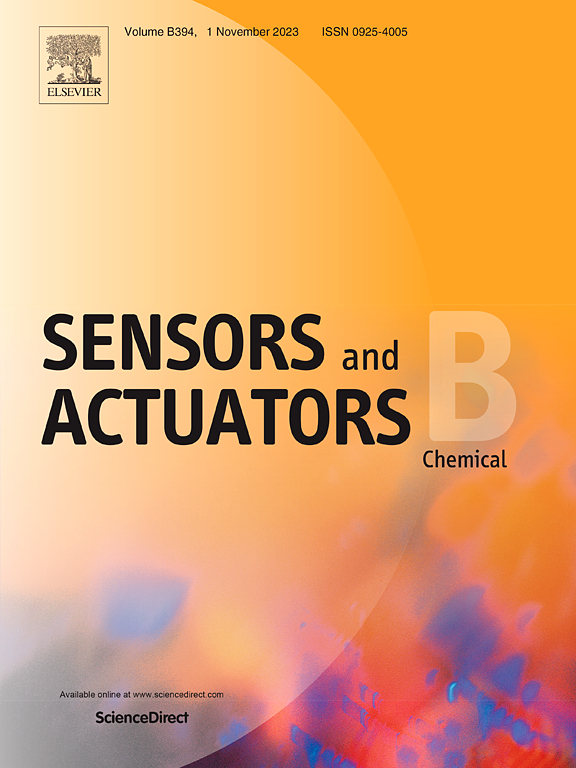Enhanced ammonia gas sensing performance of in situ-polymerised ZnO/PANI–HCl-doped emeraldine base: Experimental and theoretical investigations
IF 3.7
1区 化学
Q1 CHEMISTRY, ANALYTICAL
引用次数: 0
Abstract
Ammonia (NH3) detection has an essential role in environmental monitoring, industrial safety, and medical diagnostics, particularly in the early-stage detection of possible diseases from human breath. In this study, we comprehensively investigated various gas sensors, focusing on the characteristics of an NH3 gas sensor prepared using pure ZnO and polyaniline (PANI) and their nanocomposites at room temperature. Bare ZnO nanostructures were synthesised via electrical current heating, while PANI and ZnO/PANI were produced through in situ polymerisation. The prepared nanostructures were characterised using X-ray diffraction, field-emission scanning electron microscopy, transmission electron microscopy, energy-dispersive spectrometry, Fourier-transform infrared spectroscopy, X-ray photoelectron spectroscopy, photoluminescence spectroscopy, and Raman spectroscopy. The ZnO/PANI with 95.1 %/4.9 % by weight ratio sensor (SZP3) demonstrated a notable performance with responses of 5990 and 5.5 at NH3 concentrations of 500 ppm and 100 ppb, respectively. Density functional theory calculations helped elucidate the sensing mechanisms of the PANI, ZnO, and ZnO/PANI nanocomposites. The PANI sensor exhibited a deprotonation activation energy of 0.53 eV, correlating with the pre-adsorbed and OH− mechanisms on ZnO surfaces. ZnO/PANI nanocomposites showed increased resistance due to charge settlement effects. The sensors displayed high selectivity toward NH3 over other gases, with sustained performance and stability over 40 days. This comparative study of the gas sensing mechanisms provides both experimental and theoretical insights into the response of ZnO/PANI nanocomposites to NH3, underscoring the potential for developing a highly selective NH3 sensor. Our findings can help produce NH3 sensor prototypes for non-invasive medical diagnostics using human breath.
ZnO/聚苯胺-盐酸掺杂祖母绿碱原位聚合增强氨气敏性能:实验和理论研究
氨(NH3)检测在环境监测、工业安全和医疗诊断中发挥着至关重要的作用,特别是在早期检测人类呼吸可能引起的疾病方面。在这项研究中,我们全面研究了各种气体传感器,重点研究了用纯ZnO和聚苯胺(PANI)制备的NH3气体传感器及其纳米复合材料在室温下的特性。通过电流加热制备ZnO纳米结构,通过原位聚合制备聚苯胺和ZnO/聚苯胺。利用x射线衍射、场发射扫描电镜、透射电镜、能量色散光谱、傅里叶变换红外光谱、x射线光电子能谱、光致发光能谱和拉曼能谱对制备的纳米结构进行了表征。重量比为95.1%/4.9% (SZP3)的ZnO/PANI在NH3浓度为500 ppm和100 ppb时的响应值分别为5990和5.5。密度泛函理论计算有助于阐明聚苯胺、氧化锌和氧化锌/聚苯胺纳米复合材料的传感机理。PANI传感器显示出0.53 eV的去质子化活化能,这与ZnO表面预吸附的O₂⁻和OH⁻机理有关。由于电荷沉降效应,ZnO/PANI纳米复合材料的电阻增加。与其他气体相比,该传感器对NH3表现出较高的选择性,并具有40天以上的持续性能和稳定性。这种气体传感机制的比较研究为ZnO/PANI纳米复合材料对NH3的响应提供了实验和理论见解,强调了开发高选择性NH3传感器的潜力。我们的发现可以帮助生产NH3传感器原型,用于利用人类呼吸进行非侵入性医疗诊断。
本文章由计算机程序翻译,如有差异,请以英文原文为准。
求助全文
约1分钟内获得全文
求助全文
来源期刊

Sensors and Actuators B: Chemical
工程技术-电化学
CiteScore
14.60
自引率
11.90%
发文量
1776
审稿时长
3.2 months
期刊介绍:
Sensors & Actuators, B: Chemical is an international journal focused on the research and development of chemical transducers. It covers chemical sensors and biosensors, chemical actuators, and analytical microsystems. The journal is interdisciplinary, aiming to publish original works showcasing substantial advancements beyond the current state of the art in these fields, with practical applicability to solving meaningful analytical problems. Review articles are accepted by invitation from an Editor of the journal.
 求助内容:
求助内容: 应助结果提醒方式:
应助结果提醒方式:


